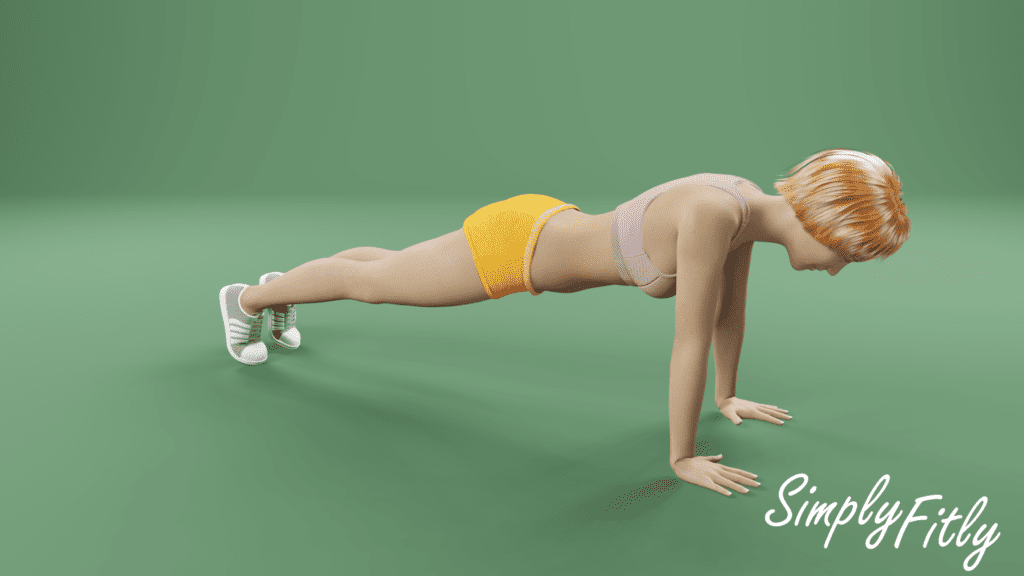
Muscle group: upper body (chest, shoulders), core, lower body (lower back, hips, legs).
Intensity: intense.
Directions
- Start in a plank position, with your hands and toes on the ground, your body in a straight line from head to heels, and your core engaged.
- Bring one knee towards your chest, keeping your foot off the ground.
- Switch legs: extend the bent knee back to its starting position and bring the other knee towards your chest.
- Continue alternating your legs. Start slow focusing on proper form and gradually increase the pace as you get stronger. In the end you should be doing like a “running” motion, moving as quickly as possible.


Modifications: start with a really slow pace. If the end point is “running” motion, then begin with “walking” motion. Focus on proper posture and maintain steady and controlled movements.
Mistakes
- Letting your hips sag or rise up: To avoid this, engage your core and keep your body in a straight line throughout the exercise.
- Not bringing your knees all the way to your chest: Make sure to bring your knee up as high as you can towards your chest to engage your abs and hip flexors.
- Letting your shoulders collapse or hunching them up towards your ears: Keep them stable and pulled back.
- Not keeping your neck neutral: Avoid looking up or down during the exercise. Keep your neck in a neutral position to avoid straining your neck muscles.
- Slamming your feet on the ground: Aim for a controlled movement and a gentle landing.
Conclusion
Mountain climbers are a dynamic full-body exercise that targets the core, shoulders, chest, and legs. They improve cardiovascular endurance, agility, and coordination while engaging multiple muscle groups simultaneously. Mountain climbers also enhance core stability and promote calorie burning due to their high-intensity nature (see for yourself – try a HIIT workout incorporporating this exercise).
Mountain climbers are an efficient way to elevate heart rate and boost metabolism. They mimic the motion of climbing, making them functional for activities like hiking or sports that require lower body strength and agility. Incorporating mountain climbers into a workout routine contributes to improved overall fitness, endurance, and muscle tone.
Mountain climbers are an ideal choice for circuit training due to their versatility. They serve as a powerful cardiovascular exercise that can be combined with strength-focused movements in a circuit. This combination challenges both aerobic and anaerobic systems, offering a comprehensive workout.